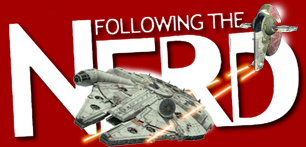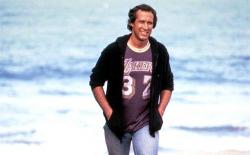In 1988, during the golden age of PC gaming, Interplay Productions created a game for up and coming publisher Electronic Arts. That game would be one of the first Role Playing Games to take place outside of a dungeon, and it was called Wasteland. Cast as part of an organisation called the Desert Rangers, your mission is to investigate a mysterious signal and solve the crisis occurring in your local community, either by inspirational speech or by the force of your hand. Using the technology that was available at the time, Brian Fargo and his team crafted a Post-Apocalyptic world after the bombs fell in the then-futuristic 1998, with a book full of paragraphs and 8-Bit graphics to guide you along the way.
Work began on a sequel, but was then shut-down after there were issues between Interplay and EA. Interplay later went on to create other games, including a spiritual successor. I’m sure you’ve heard of it, its now owned by Bethesda. Kinda rhymes with the name ballout.
In 2003, EA gave Brian Fargo the title and rights back to Wasteland, and in the renaissance of Post-Apocalyptic Gaming after the release of Fallout 3, no one wanted in on it. Fargo was very frustrated with this million dollar idea and all they asked for was something like Angry Birds… Finally, in 2012, Brian Fargo put the game up on Kickstarter, right after Tim Schaffer and Double Fine Productions broke records with their game. Raising eventually three million dollars, Wasteland 2 became a success for Inxile Productions and showed that there was still a market for old-school gaming.
Last winter, Wasteland 2 was put on Steam for Beta testing. Bugs were discovered and repaired, other issues were resolved and just a few months before its official release in August, we now have a hands-on demo to play around with.
The Character Creator For WL2, is like wearing a comfy pair of shoes. Like the original Fallout and it’s predecessor before it, Wasteland’s character creation page is very simple and to the point. Mouse your cursor over the stat and it tells you the basics of what it does. There are no archetypes here. If you want your character to be a wise-ass gunslinger, you can. If you want your medic to beat giant flies to death with a 2×4, you can. If you want your Desert Ranger to be as fast with the fixing of things as he/she is with their fists, you can. The sky is the limit in terms of characters. After you min-max your stats and figure out your skills, you can dress your Ranger and choose their ethnicity, whether or not they smoke, and if they’re deep into Hinduism. Keep in mind you have 4 characters to create, and you can always pick up 3 more later on in your travels.
When your party is complete, you are greeted by your boss, General Vargas. He tells you theres some evil to stomp out and sends you on your way. Movement is simple. Click and your group moves to where you pointed. Clicking on certain people will send you to the dialog screen, which lets you choose what to say, via key words. Sometimes the key words will have a symbol around them, and those will let you use certain dialogue choices. If you had put points in either of the -ass skills (Smart-Ass, Kiss-Ass, Hard-Ass, and yes, before you complain to my bosses, those are actually the names of the skills.), what you say can affect the situation. For example, negotiating to pass through a certain section will either end in the spending of ammunition and some dead bodies, or a polite wave and the gate guard saying: “thanks for coming out”.
When the icon changes from an ever-present arrow to an eye, your old-school printer shoots out descriptive information about what you’re looking at, or what you’re walking into. This also comes into play when you get a call over the radio. Sadly you can’t whip out your mobile device and text people your status. You have to call them and initiate communications. You can also use the description printer to read back vital information, and to assess what’s going on.
When you leave the map, you are presented with the traveling map. When you learn of more places to visit, you can open the world map, drop your waypoint and mosey along. Yes, you have to walk everywhere. And as you walk, you have a group canteen. That canteen is how long you can go whilst having life-sustaining water. Once that runs out, well, it is the desert, so, figure that one out. Sometimes, you will have random encounters and sometimes you’ll find life granting oasis’, or long forgotten cashes so you can refuel, reload, and head on your way.
When dying time arrives, everyone takes their places. The whole map uses a square grid for combat. Your movement is outlined as a white box. If you chose the leadership skill, an orange box shows its extent. It’s usually one side fights, then your side. You have initiative, and that shows who goes first in the conflict. If you use firearms, you drive your little icon over whatever you want to die, and click, you used your Action Points to solve the puzzle by killing the bad guy. On occasion, your firearm will jam, costing you some AP to unjam it. So far, I’ve only gotten up to tier-2 weaponry, which includes the iconic Sawed off 12 Gauge Shotgun, old-school battle rifles, baseball bats made rugged with concertina wire, and knives. Each item has a quick blurb about what they are, and they all have statistics. You may use the M-14 for it’s high damage output, but, there’s a better chance that it’ll jam faster than the M-1 would.
For those of you who like to stab your way to success, you can chose that as an alternative to all the shooty-shooty-I’m-gunning-for-that-booty-lifestyle. Close quarters combat is affected by what you use, and your skill. If you pumped up your strength, then that pipe that you swing will be an even greater force than the old-school revolver you have in your waistband.
When the last bullet has been fired, and the final enemy has stopped twitching from all that violence, you can loot the bodies. Most of them have junk, which can be traded for other goods and services, an even better weapon, or nicer armor. If you managed to get enough XP to level up, you can call your bosses over Shortwave, and get field promoted over the phone.
As with most Role Playing Games of the late 20th Century, there have always been those that present the concept of Choice and Consequence. If you choose X, you get Y. If you choose other X, you get other Y and the opinion people have in you will change forever. In Wasteland 2, you are presented with one such moment after the Radio Tower mission. If you ever wondered as to whether or not this promise is true, this is the best time to see it first hand. You are tasked to go and save one of two places: Highpool, where the wasteland gets it’s clean water, or the Ag Center, where the wastes get their food. Choose the latter over the former, your game changes indefinitely. One side may welcome you with open arms after you’ve averted their disaster, and the other side will curse the day they asked for help when it never came.
The choice becomes yours once you get the transmission on your radio. Help get fresh water to the wastes, or help them eat. That choice, along with other choices will befall you and your Desert Rangers, in August, when Wasteland 2 comes to your PC via multiple digital distribution platforms.
For more information about Wasteland 2, point your browser here, and the rest is all up to you.





Nerd Comments